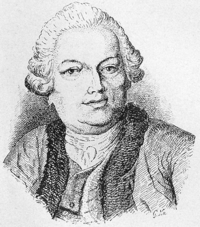History of Veterinary Medicine
Premodern era
The Egyptian Papyrus of Kahun (1900 BCE) and Vedic literature in ancient India offer one of the first written records of veterinary medicine.(See also Shalihotra) ( Buddhism) First Buddhist Emperor of India edicts of Asoka reads: "Everywhere King Piyadasi (Asoka) made two kinds of medicine available, medicine for people and medicine for animals. Where there were no healing herbs for people and animals, he ordered that they be bought and planted."
The first attempts to organize and regulate the practice of treating animals tended to focus on horses because of their economic significance. In the Middle Ages from around 475 CE, farriers combined their work in horseshoeing with the more general task of "horse doctoring". In 1356, the Lord Mayor of London, concerned at the poor standard of care given to horses in the city, requested that all farriers operating within a seven-mile radius of the City of London form a "fellowship" to regulate and improve their practices. This ultimately led to the establishment of the Worshipful Company of Farriers in 1674.
Meanwhile, Carlo Ruini's book Anatomia del Cavallo, (Anatomy of the Horse) was published in 1598. It was the first comprehensive treatise on the anatomy of a non-human species.
Establishment of profession
The first veterinary college was founded in Lyon, France in 1762 by Claude Bourgelat.According to Lupton, after observing the devastation being caused by cattle plague to the French herds, Bourgelat devoted his time to seeking out a remedy. This resulted in his founding a veterinary college in Lyon in 1761, from which establishment he dispatched students to combat the disease; in a short time, the plague was stayed and the health of stock restored, through the assistance rendered to agriculture by veterinary science and art."
The Odiham Agricultural Society was founded in 1783 in England to promote agriculture and industry,and played an important role in the foundation of the veterinary profession in Britain. A founding member, Thomas Burgess, began to take up the cause of animal welfare and campaign for the more humane treatment of sick animals. A 1785 Society meeting resolved to "promote the study of Farriery upon rational scientific principles.”
Minutes taken at the establishment of the Odiham Agricultural Society, which went on to play a pivotal role in the establishment of the veterinary profession in England.
The physician James Clark wrote a treatise entitled Prevention of Disease in which he argued for the professionalization of the veterinary trade, and the establishment of veterinary colleges. This was finally achieved in 1790, through the campaigning of Granville Penn, who persuaded the Frenchman, Benoit Vial de St. Bel to accept the professorship of the newly established Veterinary College in London.The Royal College of Veterinary Surgeons was established by royal charter in 1844. Veterinary science came of age in the late 19th century, with notable contributions from Sir John McFadyean, credited by many as having been the founder of modern Veterinary research.
In the United States, the first schools were established in the early 19th century in Boston, New York and Philadelphia. In 1879, Iowa Agricultural College became the first land grant college to establish a school of veterinary medicine.











0 Comments:
Post a Comment